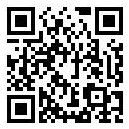Registration

Course Description
There are two different approaches to Quantum Field Theory. First one was started by Dirac and finally formalized by Segal : space-time is considered as a smooth manifold but physics is new, Quantum field theory is just a symmetric monoidal functor from geometrically equipped cobordisms to linear algebra. There is no Plank constant in Dirac-Segal approach. Second was proposed by Feynman, it basically keeps classical physics, involves Plank constant but … changes geometry of the space-time to something new. Surprisingly, both approach describe the same physics.
We will study it in detail in simplest examples. Our third semester will be about Higher Topological Quantum Theories.
Topic of fall semester:
1. Symmetric monoidal categories, linear algebra and cobordisms as examples.
2. One-dimensional cobordisms and Dirac Quantum Mechanics
3. Probabilistic interpretation of Quantum Mechanics and Schrodinger cat paradox
4. Representations of SU(2) and appearance of classical mechanics as the limit
5. Differential operators on superschemes and their classical limit
6. Bosonic and fermionic harmonic oscillators, their partition functions, anharmonic oscillator problem and Feynman diagrams
7. Functional integral in quantum mechanics, free particle, bosonic and fermionic oscillators, alternative computation of partition functions for oscillators, first appearance of infinities
8. Sigma-model quantum mechanics as Laplacians, sigma-model on a circle, comparison of Dirac and Feynman approaches, Poisson formula.
9. Feynman diagrams for anharmonic oscillator from Feynman approach, Schwinger times and Quantum mechanics on graphs.
10.Symmetry in Quantum Mechanics, Supersymmetry and Laplacian on differential forms, superpotentials and Witten-Gerasimov-Barannikov-Kontsevich generalized complex structure
11. Cobordisms equipped with metric and two-dimensional theories
12. Cobordisms from Feynman integrals in free bosonic and fermionic theories
13. Partition function on a torus in free theories
14. Idea of 2-dimensional sigma-model, explicit description of its partition function for target space being a torus.
15. Loop algebras
16. Segal description of free field theories in terms of chiral algebras
17. Segal description of theories governed by Kac-Moody algebra
18. Concept of local observable in Segal approach to OFT, examples
19. Local observables in Feynman approach to QFT, tachions and vortexes
20. Anomalous dimension of local observables in Segal and in Feynman approaches to QFT
21. Operator product expansion in Segal approach, free field theory examples
22. T-duality for sigma-models with target space being a torus from Feynman perspective
23. T-duality from Segal perspective
24. Bosonisation of fermions as another example of duality
25. Gauge anomaly in free fermionic theory
26. Energy-momentum tensor and conformal anomaly
27. Sugawara formula and KZB equations